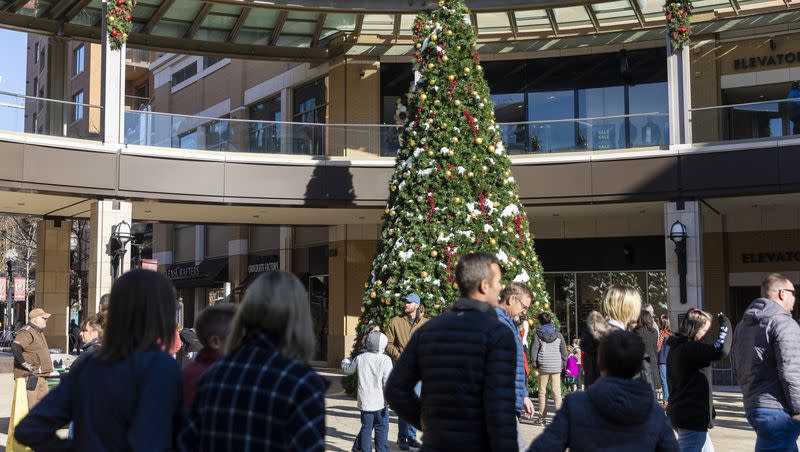Inflation, record interest rates aren’t going to keep the ho, ho, ho out of holiday spending this year

U.S. consumers facing ongoing inflation, record high credit card rates and depleted savings accounts aren’t going to let those circumstances get in the way of robust spending for the upcoming winter holiday season, according to newly released economic forecasts.
But, experts are predicting the 92% of U.S. adults who say they’re planning to celebrate Christmas, Hanukkah or Kwanzaa this year will collectively boost their holiday spending a little less this year, slowing down a trend that has seen booming growth over the past four years.
Wells Fargo economists released an analysis last week estimating that U.S. holiday sales will see a 5% bump this year over last, a rate outpacing long-term average growth but the smallest annual increase of the past four years.
And a relative easing in holiday spending could be a harbinger for a broader slowdown in consumer spending come 2024, according to the Wells report.
“We expect current conditions to allow for a decent holiday sales season for retailers, but we are still likely to see the slowest pace of annual sales growth since ahead of the pandemic, and we remain cautious on the prospects for spending in the new year,” Wells Fargo economists wrote.
Analysts also note the continued backward march of the start of holiday shopping, and 2023 looks likely to continue the trend. While the months of November and December are typically considered the window for the winter holiday shopping season, many consumers are starting to check off gift list items in October.
Related
Fed pauses rates at 22-year high but another hike is likely in store this year
Inflation signals mixed as gas hikes help drive August jump in consumer prices to 3.7%
A report from the National Retail Foundation found almost half of consumers, 46%, started their holiday shopping before November last year, up from 39% in 2019, and this year is shaping up to follow the same trend. A September NRF survey found 39% of shoppers said they plan to start shopping earlier than they typically do this holiday season.
And big retailers are wise to the trend and looking to leverage the opportunity with pre-holiday sales events in the month of October. Amazon, Walmart, Target and other retailers are all encouraging shoppers to get a head start on their gift buying with October sale events, according to the National Retail Foundation.
To be sure, the classic holiday shopping schedule is still very much in play. Last year, a record number of consumers, almost 197 million, did at least some holiday shopping over the Thanksgiving holiday weekend last year.
And, even though 41% of consumers say they plan on getting a jump on holiday shopping in October, 58% also reported they wouldn’t finish the job until December.
And that’s a quirk that all retailers are looking to leverage.
Even as e-commerce platforms have taken over the lion’s share of holiday shopping sales, Wells Fargo economists note that last-minute holiday shoppers are a target demographic for both online and brick-and-mortar shops. And while physical store owners were once strongly in the power position when it came to attracting last-minute purchases, online retailers are working to close the gap.
“Brick-and-mortar retailers have historically benefited from last minute shoppers rushing to the store ahead of the holidays, but this advantage may be slipping,” Wells Fargo economists wrote. “Large online retailers have narrowed the playing field by pouring large investment into last-mile delivery and are closing the gap between order date and delivery date to increase their share of sales.”
E-commerce strategies include beefing up staff ahead of the upcoming holidays, including Amazon’s move to add 67% more seasonal employees for 2023 than it did last year.
According to the National Retail Foundation, the top five shopping destinations for consumers for the 2023 winter holiday season will be:
Online, 58%.
Department store, 49%.
Discount store, 48%.
Grocery store, 44%.
Clothing store, 32%.
The Retail Foundation reports U.S. consumers are planning to spend an average of $875 on winter holiday celebrations, up $42 over last year. Of that $875, consumers plan to spend about $620 on gifts and another $255 on seasonal items like decorations, candy and food.
The report also found holiday shoppers are aiming to lift the spirits of friends and family first, when it comes to their purchases — 69% said gifts for others are their first buy during the holiday season.

